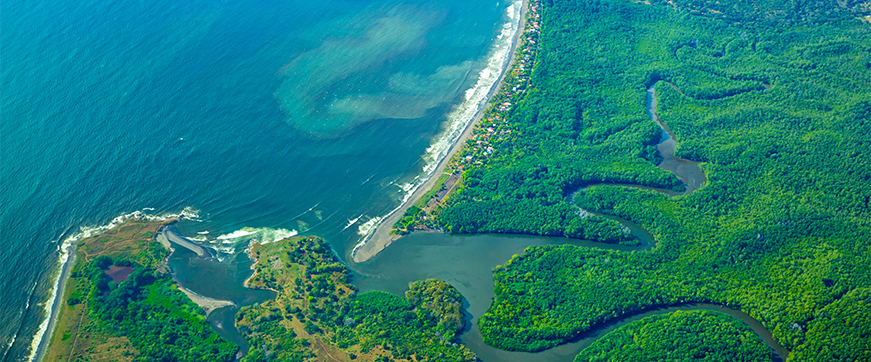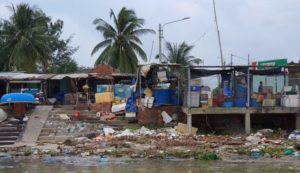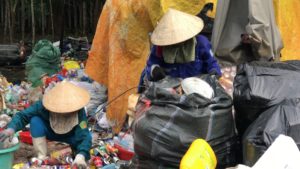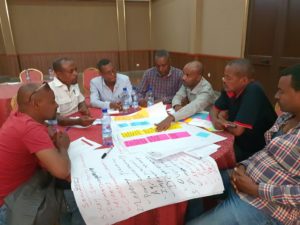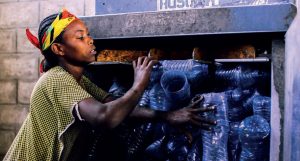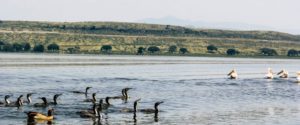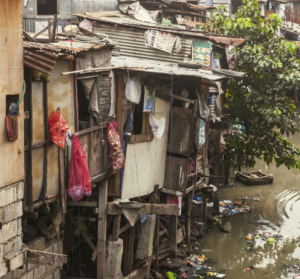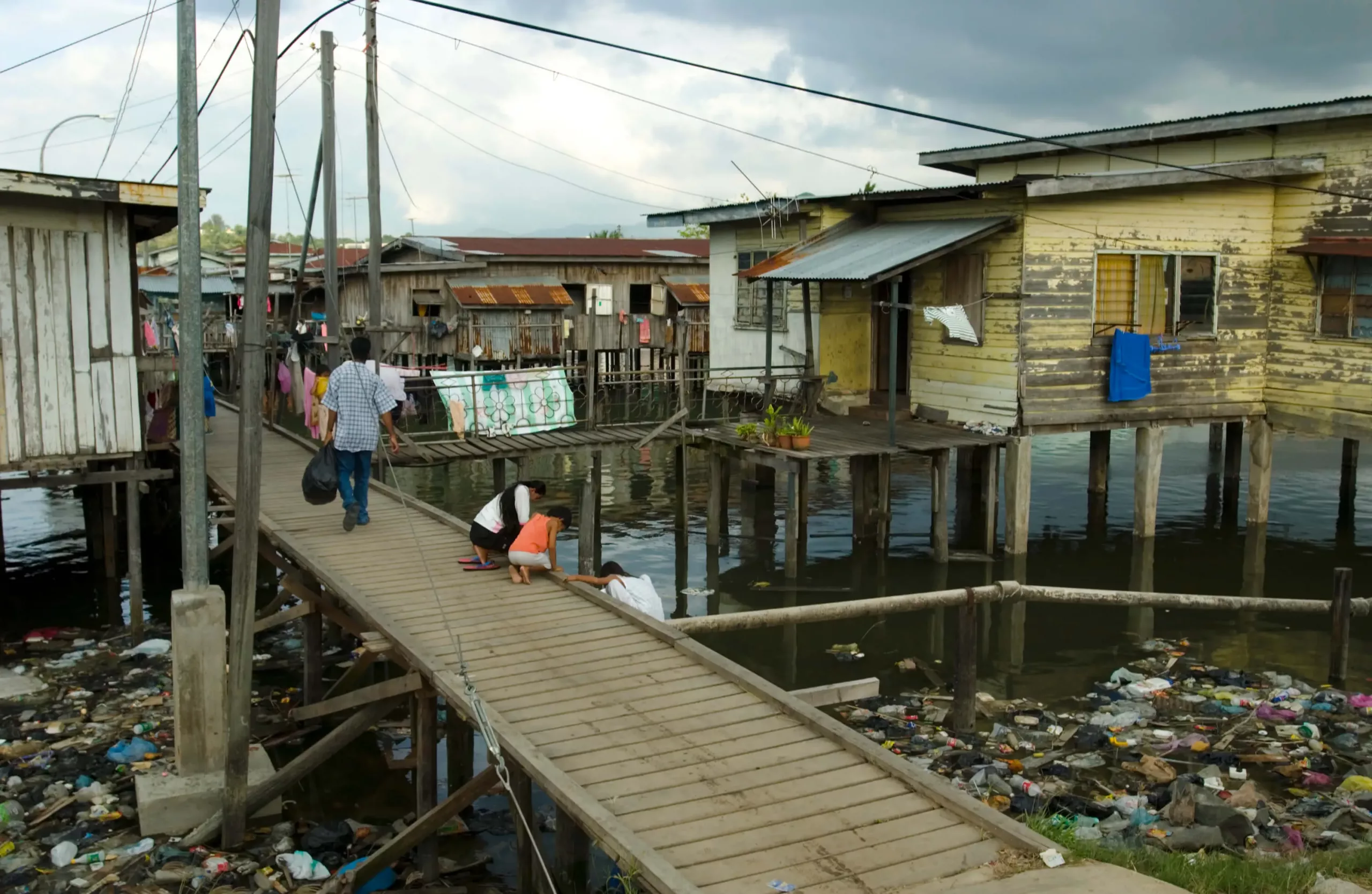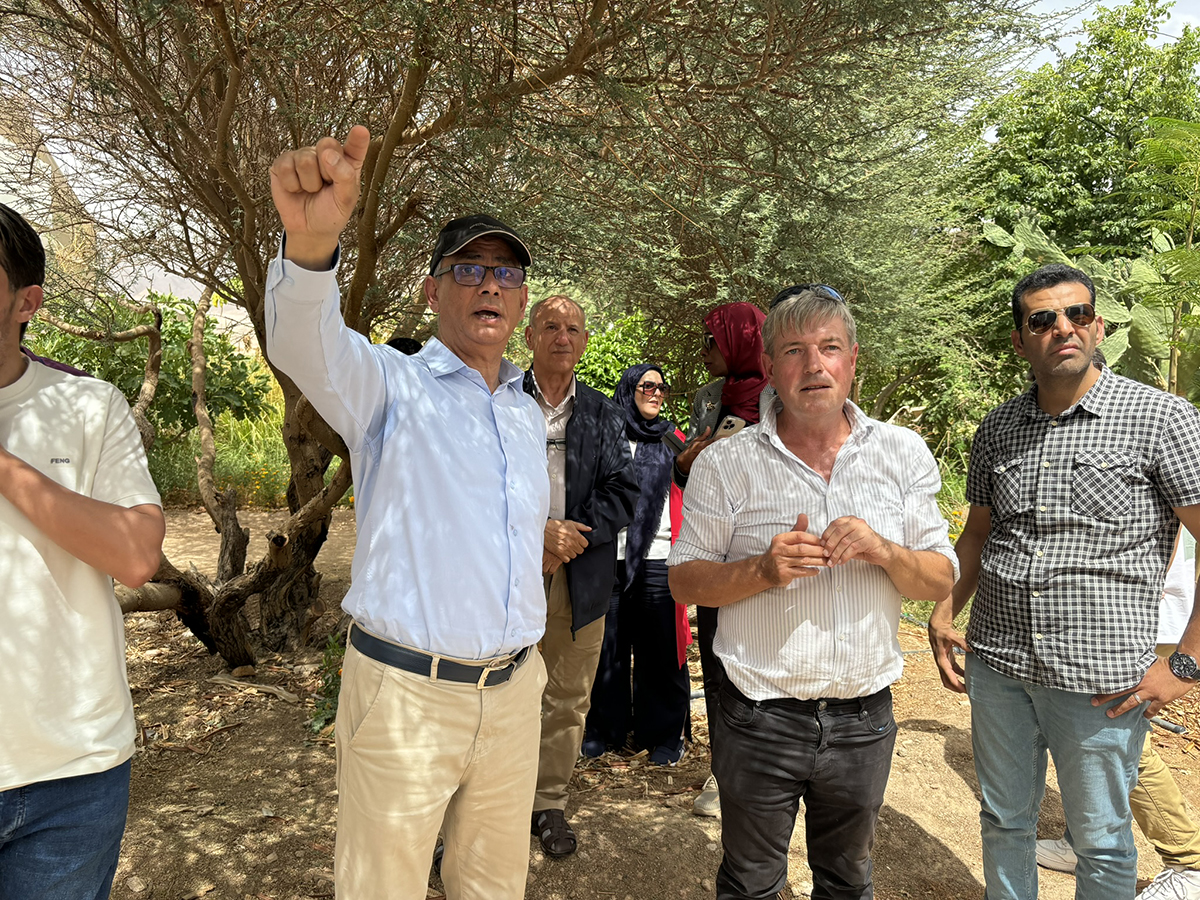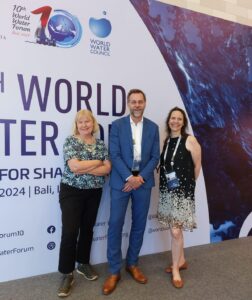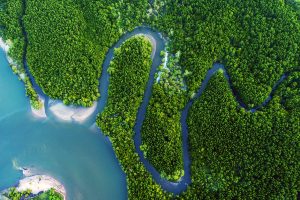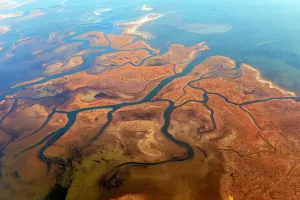This completed project established the foundations for source-to-sea management in two locations, expanded practical guidance, methods and tools through pilot testing the source-to-sea approach and captured and disseminated results and learning nationally, regionally, and globally.
The project engaged a broad set of stakeholders in applying the source-to-sea approach to addressing prioritized local challenges in two locations, Lake Hawassa Sub-Basin in Ethiopia and Vu Gia-Thu Bon River Basin in Vietnam. During the project, local stakeholders have not only acquired a better understanding of the challenges they face in addressing sediment and pollution issues across the source-to-sea (or lake) continuum, but also the benefits of source-to-sea management as a method to address them.
By developing a shared knowledge base, the project has set the foundations for more informed decisions to be made in the management of sediment and plastic pollution flows in the pilot regions. Stakeholders have also learned of the benefits of source-to-sea management as a method to address local challenges.
The project delivered on a broader aim, to deepen our understanding of the opportunities and challenges associated with implementing source-to-sea management on a more general level. Application of this learning is used to strengthen the guidance provided to practitioners beyond the pilot sites, taking the forms of practical guidance, methods and tools that were developed.
The source-to-sea approach
The source-to-sea approach directly addresses the linkages along the source-to-sea continuum of land, water, delta, estuary, coast, nearshore and ocean ecosystems leading to holistic natural resources management and sustainable economic development.
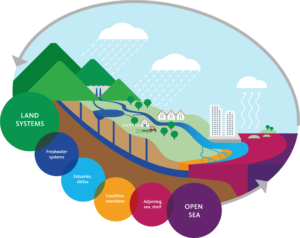
The intended outcome of the source-to-sea approach is to identify appropriate courses of action to address alterations of key flows that connect the source-to-sea segments: water, biota, sediment, pollution, materials, and ecosystem services. Doing so results in economic, social, and environmental benefits.
The approach begins with understanding the pressures and drivers that have led to alterations in the key flows. In combination with selecting an appropriate scale of intervention, engagement of stakeholders (both upstream and downstream) and a thorough understanding of the governance context sets the basis for defining a theory of change to guide planning and implementation. Monitoring and adaptive management round out the process and can be used to refine the theory of change and ensure continuous improvement toward long-term outcomes.
Piloting the approach
In the project, the first three steps of the source-to-sea approach (Characterize, Engage and Diagnose) were piloted. Experts were commissioned to improve the knowledge base on the selected priority flows: sediment and plastic in Lake Hawassa Sub-Basin, and plastic in Vu Gia-u Bon River Basin. Stakeholder engagement workshops were held and in-depth reviews of the governance systems completed.
Over the course of the project, around 200 stakeholders were brought together to learn about the source-to-sea approach and share their knowledge of local challenges that could be addressed through source-to-sea management. In the Lake Hawassa sub-basin, sediment erosion and plastic pollution were of the greatest concern while in the Vu Gia-Thu Bon basin the local interest was in stopping the flow of marine litter from the rivers and coastal areas. Three studies were carried out and shared with stakeholders to complement their own knowledge and build a shared understanding of the issues to be addressed.
Together with local stakeholders and experts, the project team also assessed source-to-sea stakeholders and prepared an analysis of governance instruments and institutions that highlighted their weaknesses, barriers to implementation, gaps and conflicts. Together these reports provide the foundation for designing priority actions to be taken to resolve the causes of sediment erosion and plastic pollution.
